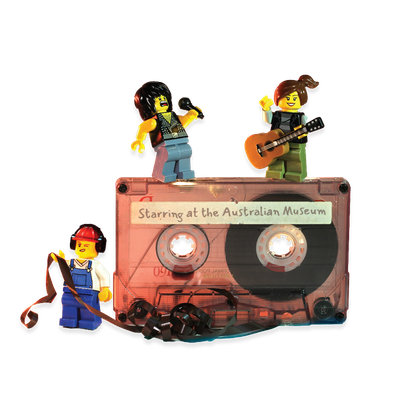Your search returned 12438 results
By Page Type
By Tag
- fish (966)
- blog (696)
- fishes of sydney harbour (401)
- First Nations (298)
- Blog (236)
- AMRI (169)
- archives (164)
- Eureka Prizes (146)
- Aboriginal and Torres Strait Islander (135)
- insect (126)
- Ichthyology (124)
- geoscience (109)
- minerals (102)
- climate change (99)
- podcast (94)
- Fish (91)
- Anthropology (89)
- International collections (80)
- Minerals Gallery (78)
- wildlife of sydney (78)
- Labridae (77)
- frog (74)
- gemstone (70)
- photography (66)
- history (63)
- Mollusca (60)
- gem (59)
- staff (59)
- Birds (56)
- Gems (56)
- Indonesia (56)
- education (55)
- shark (55)
- AMplify (54)
- people (53)
- earth sciences (50)
- exhibition (50)
- past exhibitions (50)
- Gobiidae (48)
- sustainability (46)
- Pomacentridae (45)
- Serranidae (44)
- lifelong learning (42)
- science (42)
- Earth and Environmental Science (41)
- Syngnathidae (41)
- Ancient Egypt (40)
- Bali (40)
- bird (40)
- dangerous australians (40)
-
Common and Unusual Identifications - Reptiles
https://australian.museum/learn/species-identification/ask-an-expert/common-and-unusual-identifications-reptiles/Common and Unusual Identifications - Reptiles
-
Zooplankton
https://australian.museum/learn/animals/plankton/zooplankton/Zooplankton are floating or weakly swimming animals that rely on water currents to move any great distance.
-
Meroplankton
https://australian.museum/learn/animals/plankton/meroplankton/Meroplankton spend only the larval or early stages of their life as part of the plankton and spend their adult lives on the reef.
-
Phytoplankton
https://australian.museum/learn/animals/plankton/phytoplankton/Phytoplankton are tiny, photosynthetic organisms.
-
Crustacean Metamorphoses
https://australian.museum/learn/animals/plankton/crustacean-metamorphoses/By far the most abundant members of the zooplankton, both in species and total numbers are the crustaceans.
-
Learn how to classify fossils
https://australian.museum/learn/teachers/learning/fossil-classification/Learn the difference between impression, mineralised and trace fossils and begin to classify your specimens.
-
Learn how to classify rocks
https://australian.museum/learn/teachers/learning/rock-classification/Can you tell the difference between sedimentary, igneous and metamorphic rocks? Use this series of posters to learn how to classify rocks and tell the difference between them!
-
Capturing Climate Change for educators
https://australian.museum/learn/teachers/learning/capturing-climate-change/Engage with our online exhibition Capturing Climate Change and discuss the causes and effects of, and solutions to, climate change.
-
Charles Darwin and the antlion
https://australian.museum/learn/teachers/learning/darwin-antlion/Read excerpts from Charles Darwin's diary when he was in Australia and learn about some of his first insights into evolution by natural selection.
-
Learn how to classify spiders
https://australian.museum/learn/teachers/learning/spider-classification/What's the difference between a burrower, weaver and hunter? Sort pictures of spiders into these three groups and investigate the differences between spider species.
-
Discover more
2025 Australian Geographic Nature Photographer of the Year
Special exhibition
Free entry
Now open -
Discover more
Unfinished Business
Special exhibition
Free entry
Now open -
Discover more
Wansolmoana
Permanent exhibition
Free entry
Open daily -
Find out more
Burra
Permanent kids learning space
Free entry
10am - 4.30pm![]()
-
Discover more
Minerals
Permanent exhibition
Free entry
Open daily![]()




